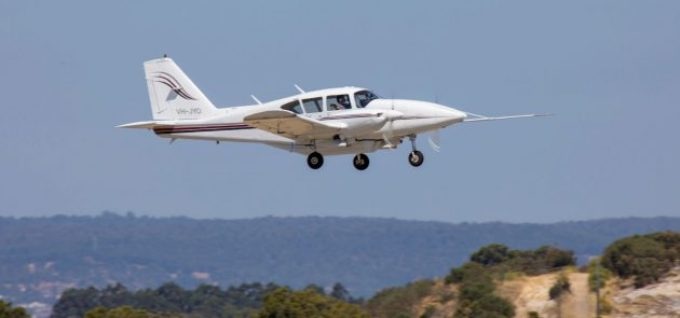Jan 18 2017
Momentum is building for Australian aerial imagery startup, Spookfish, who are set to begin local operations within the coming months.
 Credit: Spatial Source
Credit: Spatial Source
In late December, Spookfish’s flight test aircraft took to the sky with its next generation camera pod and flight test instrumentation installed for the first time – a major program milestone.
Spookfish’s patented capture platform allows for the comprehensive acquisition of aerial imagery using multiple sensors, meaning that Spookfish will be able to provide 3D models and purportedly higher resolution than other providers.
Since signing an agreement in 2016 to share operations in North America with EagleView Technologies, the Spookfish Capture Platform has undergone further development with EagleView’s assistance. Together the two companies aim to roll out the platform in North America and Australia in 2017.
However, testing was required to ensure the pod—an external compartment that serves to house the Spookfish Capture Platform—did not present a safety concern while conducting flights.
The maiden flight, conducted in December ahead of Christmas, was therefore used to ensure the aircraft had no unsafe handling or performance characteristics and that the pod was effectively ‘invisible’ to the pilot. Following the success of this initial test, Spookfish and EagleView are now undertaking a flight test program to demonstrate compliance with both Australia’s CASA and the United States’ FAA.
Sensor surpasses expectations
Last week another major milestone was reached when Spookfish’s method of data capture was validated by independent expert, Professor Clive Fraser, the imagery science director at CRCSI, professorial fellow at the University of Melbourne and internationally respected figure on photogrammetry.
Fraser’s report, dated 9 January, confirmed that Spookfish’s metric performance targets have been beaten by a significant margin and comfortably meet the requirements of the ASPRS Positional Accuracy Standards for digital geospatial data.
One of Spookfish’s key aims was to achieve metric performance in line with traditional high-end aerial camera systems, thereby allowing Spookfish to compete across a diverse range of markets from low-cost consumer mapping to high value markets such as one size fits all state-wide coverage and high grade precision mapping.
According to Professor Fraser, “This assessment of the Spookfish SP3 aerial camera system and its associated photogrammetric data processing pipeline has demonstrated that design specifications for metric accuracy are being met, and indeed surpassed.”
Fraser also explained in his report that, “Independent photogrammetric processing of a representative 84-image sub-block of aerial photography highlighted the very high metric integrity within all components of the SP3 system, namely within the multi-sensor camera design, sensor calibration and image acquisition modelling, aerial triangulation, boresight calibration, and generation of orthoimage and digital surface model data.”
“The relative accuracy of ground point determination, which indicates the internal accuracy of the SP3 system, surpassed the 5cm (1-pixel level) design expectation, and the absolute geopositioning accuracy level achieved surpassed the 20 cm level specified for the system,” Fraser explained.